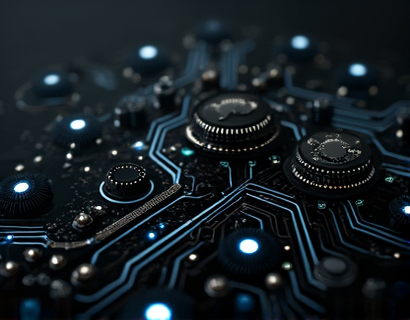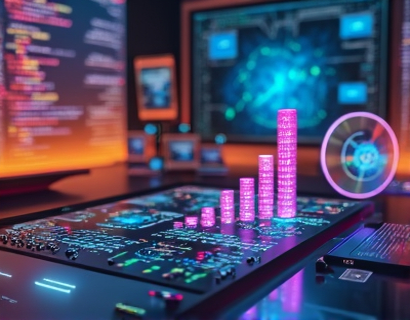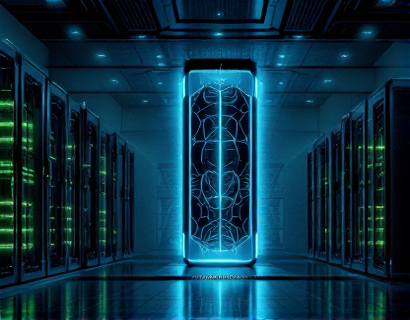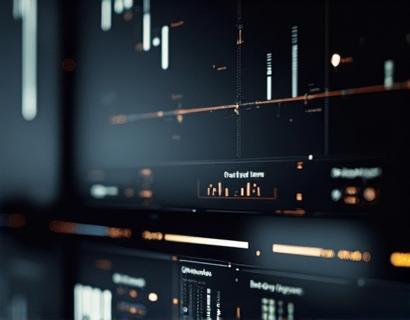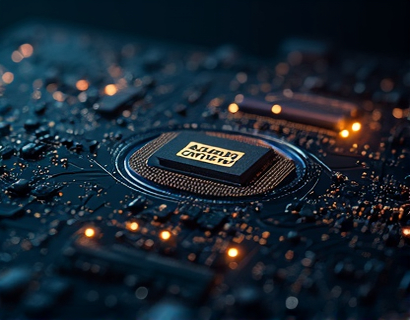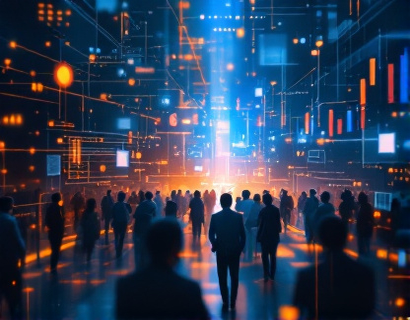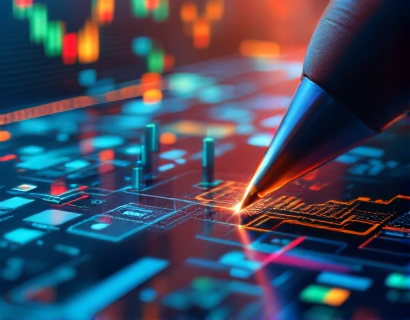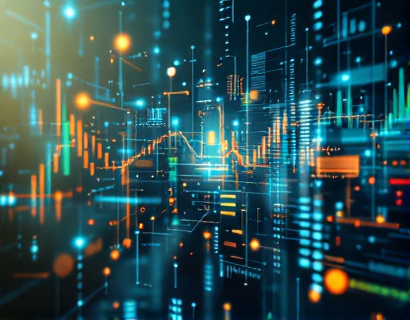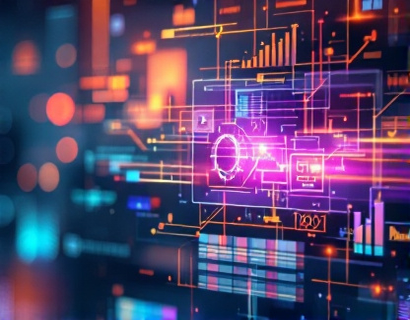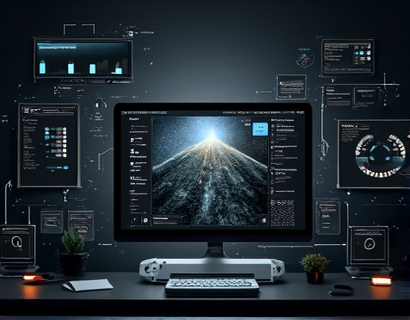Decentralized Innovation: Transforming Digital Solutions with AI and Crypto Synergy
The intersection of cryptocurrency and artificial intelligence (AI) is giving rise to a new era of decentralized innovation, fundamentally transforming digital solutions and enhancing user engagement across the evolving digital landscape. This synergy is not just a technological advancement but a paradigm shift that is redefining how we interact with digital services and applications. At the core of this transformation is the integration of decentralized applications (dApps) and intelligent systems, powered by blockchain technology and AI algorithms.
Decentralized applications, or dApps, operate on blockchain networks, which ensure transparency, security, and decentralization. Unlike traditional applications that rely on centralized servers, dApps distribute data and processing across a network of nodes, making them more resilient to attacks and less susceptible to censorship. This decentralized nature aligns perfectly with the principles of cryptocurrency, which aim to create financial systems that are free from central authority and intermediaries.
AI, on the other hand, brings a level of intelligence and automation that was previously unimaginable. Machine learning algorithms can analyze vast amounts of data, identify patterns, and make predictions or decisions with minimal human intervention. When combined with the transparency and security of blockchain, AI can be deployed in ways that enhance trust and efficiency in digital ecosystems.
Enhancing Trust and Security
One of the most significant benefits of integrating AI with decentralized systems is the enhancement of trust and security. Blockchain's immutable ledger ensures that once data is recorded, it cannot be altered without consensus from the network. AI can further bolster this by detecting anomalies and potential security threats in real-time. For instance, AI-powered algorithms can monitor blockchain transactions for unusual patterns that might indicate fraudulent activity, allowing for immediate action to be taken.
Moreover, smart contracts, which are self-executing contracts with the terms directly written into code, can be enhanced with AI to automate complex decision-making processes. AI can help in drafting and optimizing smart contracts, ensuring they are free from vulnerabilities and bugs. This not only increases the reliability of dApps but also reduces the risk of human error, making the entire system more robust and trustworthy.
Improving User Experience
The user experience (UX) is a critical factor in the adoption and success of digital solutions. Decentralized applications, when powered by AI, can offer highly personalized and intuitive experiences. AI algorithms can analyze user behavior and preferences, tailoring the app's functionality to meet individual needs. For example, a decentralized finance (DeFi) platform can use AI to recommend investment strategies based on a user's risk tolerance and historical transactions.
Furthermore, AI-driven chatbots and virtual assistants can provide 24/7 customer support, answering queries and guiding users through complex processes. These AI-powered tools can understand natural language, making interactions more seamless and user-friendly. In a decentralized environment, where users have more control over their data, AI can help manage and present this data in a comprehensible and actionable manner, enhancing overall user satisfaction.
Optimizing Performance and Efficiency
Performance and efficiency are paramount in the digital world, and the combination of AI and decentralized systems can significantly improve these aspects. AI can optimize the performance of dApps by predicting and managing resource allocation, ensuring that the network operates smoothly even under high load. For instance, AI algorithms can dynamically adjust the number of nodes involved in transaction processing based on current demand, reducing latency and increasing throughput.
Additionally, AI can help in the development of more efficient consensus mechanisms. Traditional consensus algorithms like Proof of Work (PoW) are energy-intensive and slow. AI can assist in designing and implementing new consensus mechanisms that are both secure and energy-efficient. For example, AI-driven algorithms can simulate and test different consensus models to identify the most optimal solution for a given blockchain network.
Fostering Innovation and Creativity
The synergy between AI and decentralized systems is not only about enhancing existing digital solutions but also about fostering innovation and creativity. Developers and entrepreneurs have access to a powerful toolkit that combines the decentralized infrastructure of blockchain with the intelligent capabilities of AI. This combination opens up new possibilities for creating novel applications and services that were previously unimaginable.
For instance, AI can be used to generate unique digital assets, such as art or music, which can be tokenized and sold on decentralized marketplaces. This not only democratizes the creation and distribution of digital content but also provides new revenue streams for creators. Similarly, AI-driven design tools can assist in the development of user interfaces and experiences for dApps, allowing for more innovative and aesthetically pleasing designs.
Enhancing Data Utilization
Data is the new oil, and the ability to harness and utilize it effectively is crucial for any digital solution. Decentralized systems, combined with AI, can revolutionize data utilization by ensuring data ownership and privacy while maximizing its value. Users can control their data and decide who has access to it, all while AI algorithms can process and analyze this data to derive insights and insights-driven actions.
In the context of DeFi, AI can analyze market data and user behavior to predict trends and optimize trading strategies. This data-driven approach, supported by the transparency and security of blockchain, can lead to more informed and profitable financial decisions. Moreover, AI can help in the creation of decentralized data marketplaces, where users can buy, sell, and trade data securely and transparently.
Challenges and Considerations
While the potential of AI and decentralized systems is vast, there are several challenges and considerations that need to be addressed. One of the primary concerns is the technical complexity involved in integrating these technologies. Developers must have a deep understanding of both blockchain and AI to create robust and efficient dApps. This requires a skilled workforce and significant investment in research and development.
Another challenge is the regulatory landscape. As decentralized applications and cryptocurrencies continue to grow, governments and regulatory bodies are starting to take notice. Ensuring compliance with existing laws and regulations while advocating for a favorable regulatory environment is crucial for the sustainable growth of this ecosystem.
Privacy is also a critical issue. While blockchain provides transparency, it can also expose sensitive information. AI can help in anonymizing data and ensuring that user privacy is maintained, but this requires careful implementation and ongoing monitoring.
Future Prospects
The future of decentralized innovation, driven by the synergy of AI and cryptocurrency, is promising. As technology continues to advance, we can expect to see more sophisticated and user-friendly dApps that leverage the strengths of both blockchain and AI. The integration of other emerging technologies, such as the Internet of Things (IoT) and 5G, will further enhance the capabilities of decentralized systems.
In the realm of finance, decentralized banking and lending platforms powered by AI can provide more accessible and efficient financial services to underserved populations. In healthcare, AI-driven dApps can manage patient data securely and provide personalized medical advice and treatment plans. The potential applications are vast, and the impact on various industries will be profound.
In conclusion, the combination of AI and decentralized systems is not just a technological trend but a transformative force that is reshaping the digital landscape. By enhancing trust, improving user experience, optimizing performance, fostering innovation, and maximizing data utilization, this synergy is paving the way for a more decentralized, intelligent, and user-centric digital future.



